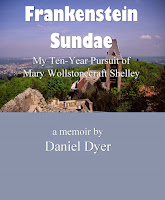About the
time that William Godwin, Jr. died of cholera in September 1832, young Percy
Florence Shelley (about to turn 13), the only surviving child of Bysshe and Mary, entered Harrow
School (where the young Byron had also gone). Initially, he was a boarder, but
when Mary received a stiff bill for his first term—much stiffer than she’d expected
it to be—she applied to the boy’s grandfather Sir Timothy Shelley for help; he
refused. So she resolved to move to the area, about a dozen miles northwest of
London, so that Percy could become a day student—saving considerable funds in
the process.
And in
January 1833, she had nearly finished her new novel, Lodore, but it did not appear until April 7, 1835, more than two
years later. Much had gone on in those two intervening years—but we’ll return
to that a bit later. Let’s take a look at Lodore,
her penultimate novel, published not under her name, initially; no, it was By the Author of “Frankenstein”—a designation
that lingers in popular culture to this day. Mary Shelley, the author of Frankenstein and … Most people probably
cannot supply anything after the and.
According to
editor Fiona Stafford (who prepared the novel for The Novels and Selected Works of Mary Shelley, 1996), the novel was
very well received. The critics approved
of her decision to move into a more conventional story—a love story, at that. (No
more mad monsters killing children!) Sadly, as Stafford notes, Mary’s original
manuscript is lost.[1]


No comments:
Post a Comment